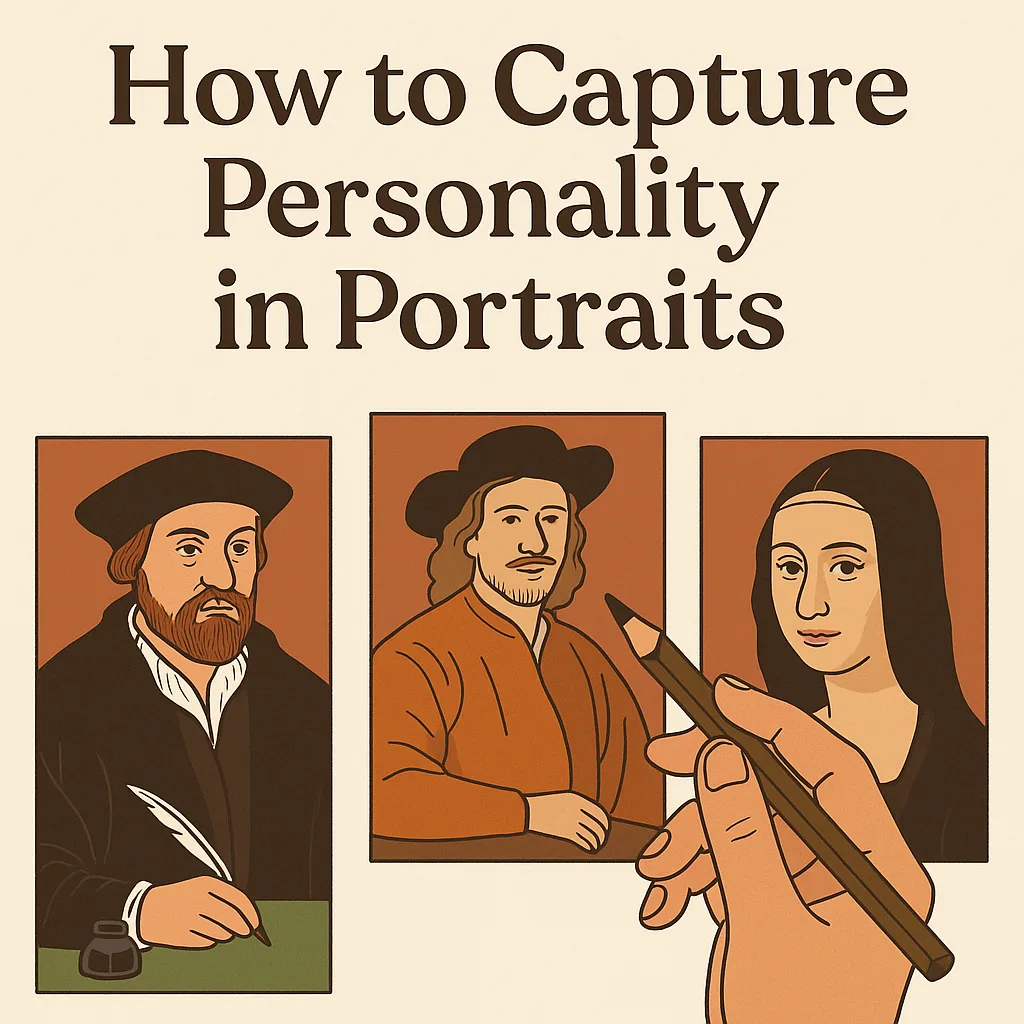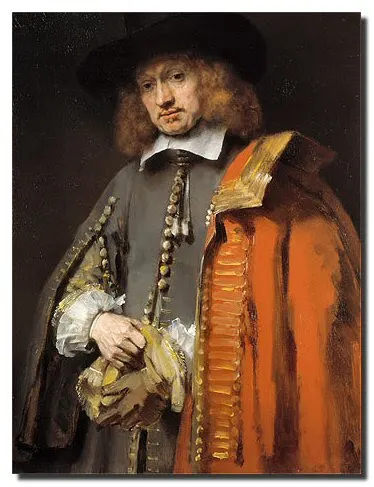Portraits are more than likenesses. They are acts of interpretation, moments in which the artist selects gestures, expressions, and settings to suggest the sitter’s inner life. Norbert Schneider, in The Art of the Portrait, emphasizes that the genre emerged in the Renaissance as a way for individuals to project not only appearance but also social identity and psychological presence (Schneider 66). For artists today—whether painting, sketching, or photographing—capturing personality remains the greatest challenge. To move beyond surface resemblance, one must consider expression, symbolism, and atmosphere. Examining the portraits of Hans Holbein the Younger and Rembrandt provides practical lessons in how to approach this task.

Step 1: Look for Telltale Expressions
The first way to convey personality is through subtle facial cues. Holbein’s Portrait of Georg Gisze (1532) depicts a German merchant surrounded by objects of trade. While the meticulous details of his costume and office setting reveal wealth and occupation, it is the sitter’s eyes that dominate. They fix the viewer with an alert and almost suspicious gaze, suggesting shrewdness and vigilance in business (Schneider 8). Holbein used a restrained expression—neither smile nor frown—but amplified it by sharpening the line of the lips and the directness of the gaze.

Practical advice: When sketching or painting, avoid generic smiles or stiff expressions. Instead, ask: What emotion or trait defines this person? A furrowed brow can imply intensity; a sidelong glance can suggest curiosity or suspicion. The key is restraint—small changes in the eyes and mouth carry more weight than exaggerated expressions.
Step 2: Use Gesture and Pose
Faces are powerful, but bodies also communicate. In Rembrandt’s Portrait of Jan Six (1654), the sitter is shown pausing in the act of putting on a glove. The gesture is casual yet eloquent, suggesting ease, refinement, and confidence (Janson 834). The relaxed stance, combined with the luxurious cloak, turns a moment of dressing into a revelation of personality: Jan Six is both elegant and approachable.

Practical advice: Incorporate simple gestures into your portraits. A hand resting on a book may suggest learning, while folded arms might communicate firmness. Poses should not be overly theatrical; the strongest impressions often arise from ordinary actions made meaningful.
Step 3: Select Symbolic Objects
Schneider stresses that Renaissance and Baroque portraits often used objects as emblems of character (Schneider 104). In Holbein’s works, flowers, letters, or coins in the background reinforced the sitter’s identity. Similarly, Rembrandt’s portraits sometimes included books, swords, or staffs to reflect the sitter’s profession or aspirations.
Practical advice: If painting or photographing someone, consider the inclusion of personal objects. For a scholar, a pen or a pile of papers may hint at intellect. For a musician, an instrument can suggest passion. The trick is balance: objects should not overwhelm the sitter but serve as discreet clues.
Step 4: Manipulate Light and Atmosphere
Few tools are as effective in suggesting personality as lighting. Rembrandt mastered chiaroscuro—the dramatic interplay of light and shadow—to suggest psychological depth. In his many self-portraits, the face often emerges from darkness, half-lit, as though inviting the viewer into a private dialogue. This technique implies introspection and gravitas, qualities that words alone cannot convey (Schneider 144).
Practical advice: When drawing or photographing, experiment with directional light. Side lighting can emphasize strength or mystery, while soft, even lighting suggests serenity. Think of light not merely as illumination but as emotional atmosphere.
Step 5: Balance Realism with Idealization
One of the hardest choices in portraiture is how much to flatter the sitter. Early Renaissance painters like Jan van Eyck sought microscopic realism, showing every wrinkle and blemish, while later traditions encouraged idealization. Holbein and Rembrandt strike a balance: their portraits are recognizably human, yet softened or dramatized to emphasize character rather than mere appearance (Schneider 138).
Practical advice: Ask yourself: What is essential to this sitter’s personality? Retain details that reveal individuality—such as a distinctive nose or a scar—but soften those that distract. The goal is not photographic accuracy but expressive truth.
Step 6: Engage the Viewer
Finally, portraits capture personality by inviting the viewer into a relationship with the sitter. In Holbein’s works, direct gaze often establishes a formal dialogue, as if the sitter asserts presence and dignity. In contrast, Rembrandt sometimes depicts his subjects looking away, lost in thought, allowing the viewer to become a silent observer of a private moment. Both strategies create engagement, but in different ways.
Practical advice: Decide whether your sitter should confront the viewer or turn inward. Direct gazes are commanding and public; averted eyes are contemplative and intimate. Either way, remember that a portrait is not complete until it establishes a relationship with its audience.
Conclusion
Capturing personality in portraits requires more than reproducing a likeness. As Schneider notes, the greatest portraits operate as “psychological documents,” crystallizing the sitter’s presence for future generations (Schneider 72). By studying Holbein’s precision and Rembrandt’s atmospheric depth, contemporary artists can learn how to use expression, gesture, objects, light, and pose to reveal character. Ultimately, a successful portrait does not merely show us what a person looks like—it tells us who they are.
Works Cited
Janson, H. W., and Anthony F. Janson. History of Art, Volume 1. 4th ed., Prentice Hall / Harry N. Abrams, 1991.
Schneider, Norbert. The Art of the Portrait: Masterpieces of European Portrait Painting, 1420–1670. Taschen, 2002.

